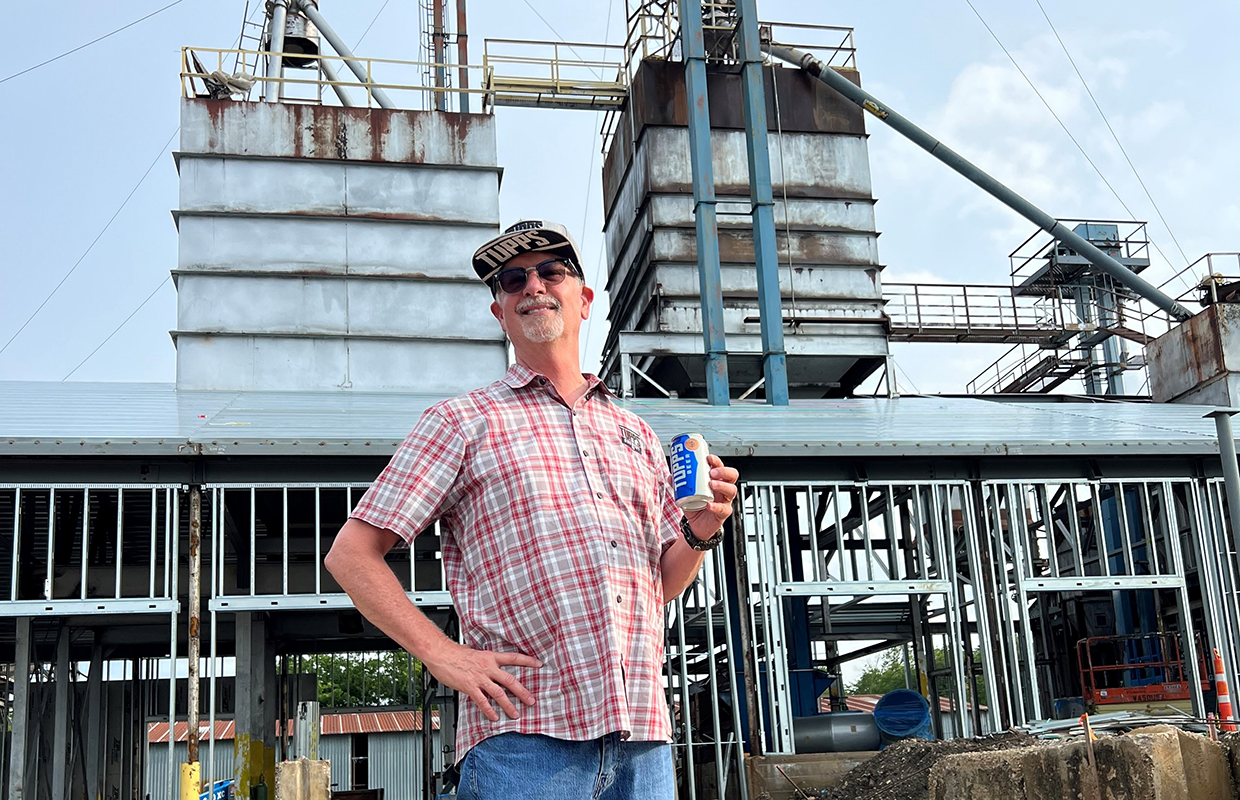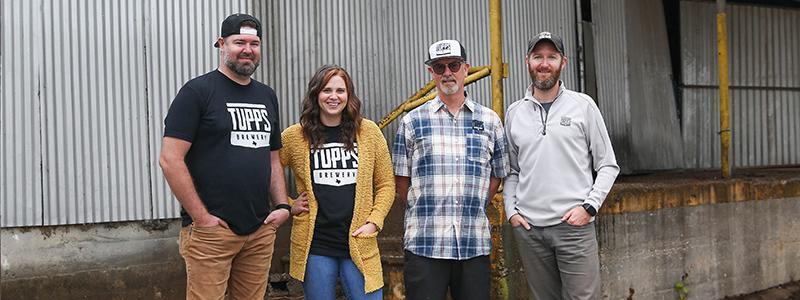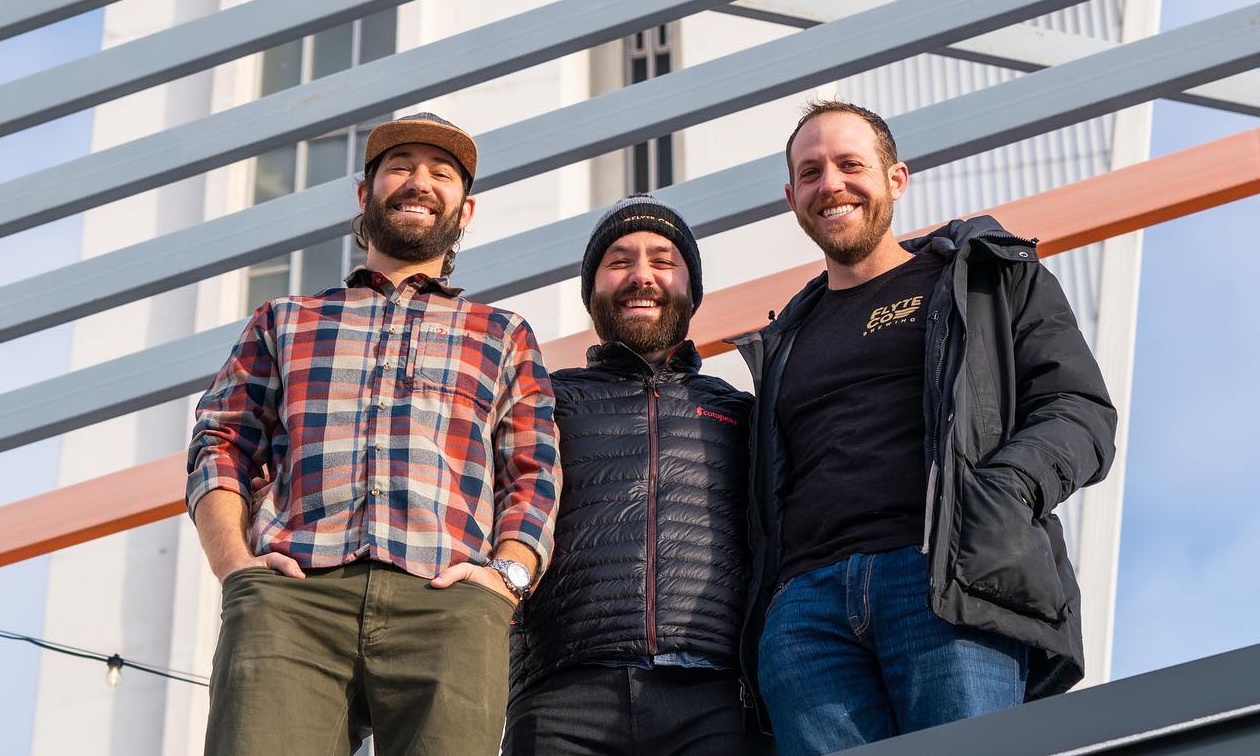
There’s a lot of opportunity for smaller breweries to grow without crossing state lines in a place like Texas. The state has 254 counties and four enormous metropolitan areas — Dallas-Fort Worth, Austin, San Antonio and Houston — that have a combined population of approximately 20 million people.
To make the leap from a hyperlocal brewery to being a destination brewery with room to spread to other metropolitan markets within the Lone Star state, it takes solid financial backing.
It can be a daunting task for a smaller brewery to come up with the capital needed for such an undertaking, but some methods — such as partnering with municipalities — can make a pipe dream into a reality.
Partnering with a City
TUPPS Brewery owner Keith Lewis, who started the small but thriving brewery in the Dallas suburb of McKinney eight years ago, knows firsthand the value of building a rapport with a local government.
Lewis found himself with a good problem to have about two years ago: TUPPS products were enjoying a growing following in the Dallas and Austin areas, with myriad tap handles in multiple bars and restaurants and their cans on the shelves of grocery store chains and other large retailers.
The next logical place for TUPPS to go was Houston — Texas’s largest metropolitan center in terms of both expanse and population. They began by selling draft in bars and restaurants a year ago and have begun distributing to key retailers.
Before they truly could do that, they needed more space beyond that of their current facility. They needed faster canning equipment and a reasonable way to pay for all of it.
“Two years ago, we hit a wall,” said Lewis, a former home brewer-turned-brewery owner who caught the brewing bug while working for Texas Instruments. “We were doing about 11,000 barrels and we couldn’t brew any more beer in our current location. We were in a bind. We had to start looking.”
Fast forward to 2023. By mid-June, TUPPS was putting the finishing touches on a new brewery that had already begun production on its newest SKU — Day Pass, a Belgian Witbier. But that’s not where TUPPS’ expansion ends. Construction is underway on a new taproom that’s being built from the bones of an old flour mill that was a fixture in the once-agrarian town which has since evolved into a county seat complete with fine dining restaurants, shopping, bars, and urban wineries. In addition to that, there will be an outdoor covered beer hall as well as a playground and community garden space.
When the new taproom opens later this year, TUPPS occupancy will swell to 2,600 from the 170 it has at its current facility.
The City of McKinney, which is building its new City Hall next door, and its vision for growing the city’s underdeveloped East Side played a big role in TUPPS having the ability to make this move.
“This is an $18 million project,” said Lewis, citing a figure that includes construction costs, equipment purchases and installation. “We probably have $2 million in it, and that was pretty much because we got great investors who believe in us to come on board.”
Having a vision that fits a city’s growth and economic development plans plays a big role in getting them to play ball.
“We went to the city and told them what we wanted to do. We shared their vision, which was to have not just a brewery, but an entertainment destination zone and when we talked to the city about that, they were very willing to help and partner with us,” Lewis said.
For now, the city owns the facility that TUPPS is in, but the brewery will ultimately pay them back, getting the benefits of ownership without a large capital outlay upfront.
“It’s a rent-to-own lease arrangement which is wonderful because, quite frankly, we otherwise couldn’t have done this,” Lewis said. “Nobody can go from 12,000 barrels and $2 million to this. It’s just not possible.
“My advice to any brewery thinking about doing something like we’re doing is to take care of your home customers, have a vision, and take care of your city. They are a great resource.”
Becoming Part of a Community’s Plan
Lewis described the process that followed the decision to expand into the Houston market — and, with that, into a bigger facility that would help them better serve current customers — as a mental switch that flipped.
“You start getting a lot of calls from brokers and start looking at properties,” he said. “You get excited. One thing led to another, and we started looking at other cities, like Frisco and Allen. Allen put a deal on the table for us, and we told them we needed to go back and talk to McKinney and let them know what was going on.
“McKinney told us ‘You’re not going anywhere — we really need you here,’ and they showed us this property on the east side that we fell in love with.”
Being a brewery, TUPPS’ vision for having a destination taproom with brewing facilities onsite perfectly complemented the city’s plans to develop the east side by making it the new home of its $126 million city hall project.

City Halls aren’t sexy, but breweries are.
“That’s one reason the city was excited,” Lewis said. “We had been in this city eight years, and if you’re a good corporate citizen, cities love you so we really resonated with them. When they found out we were prepared to leave, they didn’t want us to go and they knew this part of town was where they needed help.”
The site of both the new city hall and the new brewery is just a five-minute walk across the main thoroughfare from downtown.
“When you want to develop the east side, you put your new city hall there, but where’s the fun?” Lewis said. “We’re the fun, and it’s pretty neat.”
The deal comes with additional benefits beyond helping to build the new facilities. There’s ample free municipal parking in a long stretch in front of City Hall, which is open Monday through Friday. The city also plans to turn land across the street from the brewery into a park that will connect to downtown via a walkway that will run under the main road that divides downtown and the east side.
“We’re open Thursday through Sunday, so it’s a good fit for us,” Lewis noted. “McKinney’s downtown square is also really nice, but the parking there is less than desirable. You can park at TUPPS on the weekend, start here and walk downtown. People who want to go shopping downtown can do that, and others who want to stay here can do so.”
Scaling Up Production
Maintaining good relationships with vendors has been another key to TUPPS setting itself up to better meet both current and future demands.
“One of the things I think we have been blessed with here is we have chosen some good partners,” Lewis said. “It is unbelievable what Deutsche Beverage has done for us. They did all of the brewhouse. They did all of our tanks, including a 240-barrel brite tank.
“A cool thing a lot of brewers really love here is that our whole place is hard-piped. Every tank is connected to a hard pipe that goes back to the brewhouse, to the cleaning system, and back to canning.”
Lewis said it was amazing what having a relationship with vendors could do for a brewery looking to scale up production, noting that you can pick up your phone and get help designing your entire canning system.
He’s excited about TUPPS’ new unit, which he said will go a long way toward meeting distribution demands.
“We bought a top-of-the-line canning unit that runs at 300 cans a minute, and I can’t wait to see this thing humming away,” he said. “The current canning line runs at 36 cans per minute, so this is like a flamethrower. This is a rotary system so the quality of beer will go up, and costs will go down.”
The new brewery has a 60-barrel, four-vessel system that is fully automated — a stark contrast to the current manual two-vessel system.
Lewis said the new system would be another turn of the crank for sustainability, efficiency, and quality.
Other efficiency-improving features include a loading dock big enough to accommodate a forklift, which will reduce the time spent loading 18-wheelers, and a feature that will allow the crew to pull a lever and release spent grain directly into trucks.
A big learning curve for the new equipment wasn’t expected, Lewis said. In some ways, the automation makes it easier for his crew to use.
“They were intimately involved in knowing what we were going to select,” Lewis said. “We made multiple trips to CBC, and the beauty of all of it is it is automated.
“At our current place, you’re lifting bags, you’re changing valves and this should be a lot easier than it is over there.”
That’s without even considering the comfort factor of the new facility, which will help the crew work in safer temperatures.
“They’re very excited to be over here,” he said. “It’s 90 degrees outside and 85 in here. Over there, it’s over 100 inside.”
Keeping your focus local also benefits the R&D process involved when trying to decide what your growing brewery needs.
While Lewis said they knew what the pain points would be and had a lot of help from their vendors, he also noted that touring breweries around the United States helped paint a clearer picture.
“When you leave your home market and you’re not distributing everywhere, everyone is willing to give you advice,” Lewis said. “Borrowing other people’s ideas and running them by our vendors has helped us come up with solutions that really work for us.”




Be the first to comment